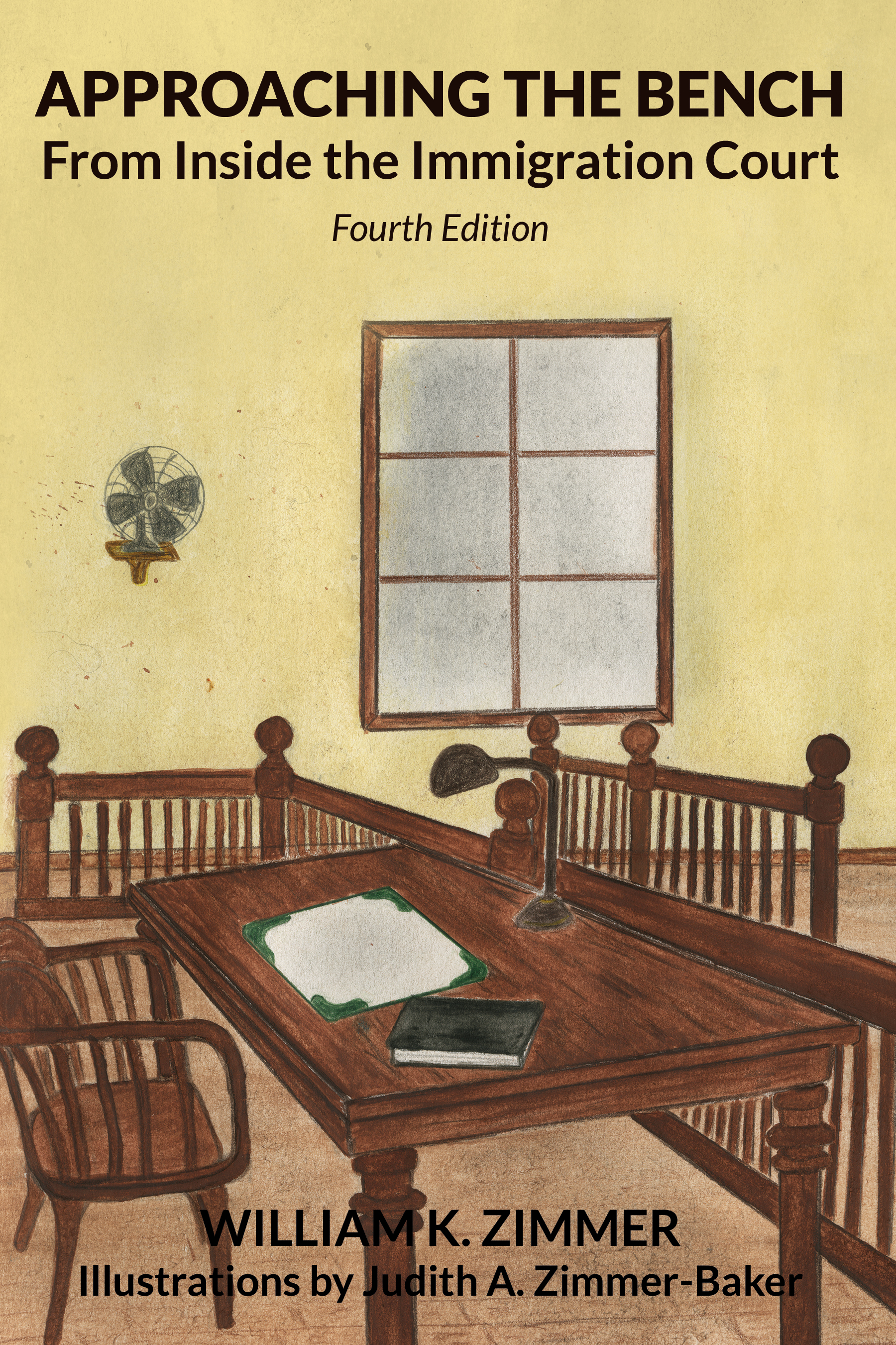An Order Reinstating a Removal Order is Not a Final Removal Order
.jpg)
The procedural history, facts of record, holding and rationale in Argueta-Hernandez v. Garland (July 10, 2023) No. 22-60307 are as follows:
Case History
The Department of Homeland Security (“DHS”) reinstated a previous removal order relating to the Petitioner.
The Petitioner did not contest the reinstituted removal order, but filed applications for withholding of removal and protection under the Convention Against Torture (“CAT”).
In a subsequent hearing, an Immigration Judge denied the Petitioner’s applications.
The Petitioner appealed to the Board of Immigration Appeals (“BIA”).
The BIA agreed with the Immigration Judge and dismissed the Petitioner’s appeal.
The Petitioner then filed a petition for review of the BIA’s decision.
Facts
- The Petitioner is a native of El Salvador who entered the United States around 2003 and was ordered removed in 2007. The Petitioner then returned to the United States in 2010, 2018, and 2019.
- In September 2019, the DHS reinstated the Petitioner’s 2007 removal order.
- On this occasion, the Petitioner alleged fear of persecution from a criminal gang known as the “MS-13,” and based on this rationale filed applications for relief from removal known as withholding of removal under section 241(b)(3) of the Immigration and Nationality Act, as amended (“the Act”) and CAT.
- An immigration judge denied his application and, on April 27, 2022, the BIA dismissed his appeal.
- The Petitioner filed a petition for review on May 26, 2022.
Held
Petition for Review DISMISSED for lack of jurisdiction
Rationale
The Fifth Circuit Court of Appeal reasoned as follows:
Withholding of Removal And CAT Decisions
- To invoke appellate court jurisdiction, a petitioner must, at a minimum, file a petition for review “no[] later than 30 days after” the order becomes final. See section 242(b)(1) of the Act.
- The 30-day deadline under section 242(b)(1) of the Act is “mandatory and jurisdictional” and cannot be equitably tolled. Stone v. INS, 514 U.S. 386, at 405 (1995).
- A removal order is one that “conclud[es] that the alien is deportable or order[s] deportation.” See section 101(a)(47)(A) of the Act.
- Orders denying CAT relief or withholding of removal are not orders of removal because they address the “separate [] and antecedent” issue of “where an alien may be removed,” not “whether an alien” is removable. Johnson v. Guzman Chavez, 141 S. Ct. 2271, at 2286, 2288 (2021).
- Determinations relating to withholding of removal and CAT do not disturb the removal order, nor do they affect the validity of the removal order. Nasrallah v. Barr, 140 S. Ct. 1683, at 1691 (2020).
- Regardless of whether withholding of removal or CAT relief is granted or denied, the DHS “retains the authority to remove the alien to any other country authorized by the statute.” Johnson v. Guzman Chavez, at 2285.
Orders Reinstating Previous Removal Orders
- Although the Petitioner claims that his reinstated removal order is a final removal order in reliance on Ojeda-Terrazas v. Ashcroft, 290 F.3d 292, at 295 (5th Cir. 2002), see also Ponce-Osorio v. Johnson, 824 F.3d 502 (5th Cir. 2016), the United States Supreme Court implicitly overruled these cases. Nasrallah v. Barr and Johnson v. Guzman Chavez.
- Specifically, according to the United States Supreme Court, “[f]or purposes of [§ 1101(a)(47)], final orders of removal encompass only the rulings made by the [BIA] that affect the validity of the final order of removal.” Nasrallah v. Barr, at 1691, and “Because the validity of removal orders is not affected by the grant of withholding-only relief, [the] initiation of [such] proceedings does not render non-final an otherwise ‘administratively final’ reinstated order of removal.” Johnson v. Guzman Chavez, at 2288.
- Two circuits have recently held that withholding-only proceedings do not impact the finality of an order of removal. Bhaktibhai-Patel v. Garland, 32 F.4th 180, at 190–95 (2d Cir. 2022); Farooq v. AG U.S., No. 20-2950, at 2023 U.S. App. LEXIS 3065, at *7 (3d Cir. Feb. 8, 2023).
Conclusion
An appellate court has no jurisdiction to consider the Petitioner’s claim relating to withholding of removal and CAT relief because:
- The BIA’s denial of the Petitioner’s application for withholding of removal and CAT relief is not a final order of removal, and
- his petition is untimely because it was filed over 30 days after his reinstated removal order became final.
Commentary
Withholding and CAT Relief
Attorneys who successfully obtain a grant of withholding of removal for a client should not be surprised if the Immigration Judge also orders the client removed to a country other than the country where the risk of persecution exists. A grant of withholding of removal is country specific and the DHS can remove an alien who has been granted withholding of removal by following the prioritized approach found in section 241(b)(1) of the Act. See 8 C.F.R. §§ 241.15 and 241.25.
The same is true for aliens applying for CAT relief. The DHS may remove the applicant to another country (other than the proposed country of removal where the likelihood of torture exists) that is willing to accept the applicant.
It might calm the nerves of some to know that during the 35 years that I have worked for the federal government I have never heard of an actual removal to a third country after a grant of withholding of removal or CAT relief.
It appears that the main reason aliens granted withholding of removal or CAT relief are rarely removed to a third country is the inability of the United States government to find another country that will accept such aliens.
Reinstatement
Perhaps, review of reinstatement of exclusion, deportation and removal orders in the context of immigration law which has expanded in scope over time will be helpful to some readers.
Section 241(a)(5) of the Immigration and Nationality Act, as amended (“the Act”) is brief enough to cite in its entirety:
If the Attorney General finds that an alien has reentered the United States illegally after having been removed or having departed voluntarily under an order of removal, the prior order of removal is reinstated from its original date and is not subject to being reopened or reviewed, the alien is not eligible and may not apply for any relief under this Act, and the alien shall be removed under the prior order at any time after the reentry.
The immediate predecessor of section 241(a)(5) of the Act is section 242(f) of the Immigration and Nationality Act of 1952 (“the 1952 Act”).
Section 242(f) of the 1952 Act narrowly targeted specific classes of aliens for reinstatement of deportation or exclusion orders, who illegally reentered the United States after deportation or exclusion. These classes of aliens were defined under paragraphs of section 241(a) of the 1952 Act:
- (4) persons convicted for crimes involving moral turpitude;
- (5) violators of the Alien Registration Act of 1940;
- (6) alien anarchists communists and subversives;
- (7) persons seeking to engage in activities prejudicial to public interest, dangerous United States welfare, safety or security, and activities in violation of laws relating to espionage, sabotage, public disorder, and subversive to national security;
- (11) drug addicts and traffickers;
- (12) prostitutes and persons who engage in organized prostitution and commercialized vice;
- (14) persons convicted for firearms violations;
- (15) persons convicted for violating title I of the Alien Registration Act of 1940;
- (16) persons with multiple convictions for violating title I of the Alien Registration Act of 1940;
- (17) generally, persons convicted for violations of neutrality, interference with foreign commerce and espionage; and
- (18) persons convicted for importing any alien for prostitution.
Congress broadened the scope of reinstatement of previous removal orders by replacing section 242(f) of the 1952 Act with section 241(a)(5) of the Act in the Illegal Immigration Reform and Immigrant Responsibility Act of 1996 (“IIRIRA”) enacted on September 30, 1996.
In particular, section 241(a)(5) of the Act, unlike section 242(f) of the 1952 Act, is not limited to specific classes of illegal reentrants, but applies to all illegal reentrants who illegally reenter the United States after a final removal order is enforced. It seems reasonable to project, therefore, that more aliens who become subject to a reinstated removal order might be eligible to file relief applications if they can avoid the bar to relief imposed by section 241(a)(5) of the Act.
Prior to the September 30, 1996 enactment of IIRIRA, a reinstated deportation order under section 242(f) of the 1952 Act could be challenged by collaterally attacking the original deportation order under a “gross miscarriage of justice” standard. Enforcement of a deportation or exclusion order constituted a gross miscarriage of justice only if the order clearly could not have withstood judicial scrutiny under the law in effect at the time of issuance or execution.
The Board of Immigration Appeals (“BIA”) published the following cases addressing the gross miscarriage of justice standard relating to application of section 242(f) of the 1952 Act:
- Matter of Malone, 11 I&N Dec. 730, at 731-32 (BIA 1966) (Collateral attack on a deportation order warranted when the finding of deportability was not in accord with the law as interpreted at that time and resulted in a gross miscarriage of justice).
- Matter of Farinas, 12 I&N Dec. 467, at 471-72 (BIA 1967) (A gross miscarriage of justice occurred where an alien was ordered deported and the decision could not have withstood judicial attack under the interpretation of prevailing law.).
- Matter of Roman, 19 I&N Dec. 855, at 856-57 (BIA 1988) (An alien may collaterally attack a final order of exclusion or deportation in a subsequent deportation proceeding only upon showing that the prior order resulted in a gross miscarriage of justice.).
The BIA, in In re G-N-C-, 22 I&N Dec. 281 (BIA 1988), in the context of a controversy involving termination of deportation proceedings, cited Matter of Roman, supra, and noted that “an alien may collaterally attack a final order of exclusion or deportation in a subsequent proceeding only upon showing that the prior order resulted in a gross miscarriage of justice.” In addition, the BIA held that the Immigration Judge and the BIA lack jurisdiction to review a decision of the Immigration and Naturalization Service ("INS") to reinstate a prior order of removal pursuant to section 241(a)(5) of the Act. See In re G-N-C-, headnote 3.
In the light of Argueta-Hernandez v. Garland, as well as Nasrallah v. Barr and Johnson v. Guzman Chavez, prudence seems to demand scrutiny of the validity of the original final removal order when confronted with reinstatement. Challenging the original removal order itself or its finality, might preserve an opportunity to seek appellate jurisdiction in accordance with section 242(b) of the Act.
